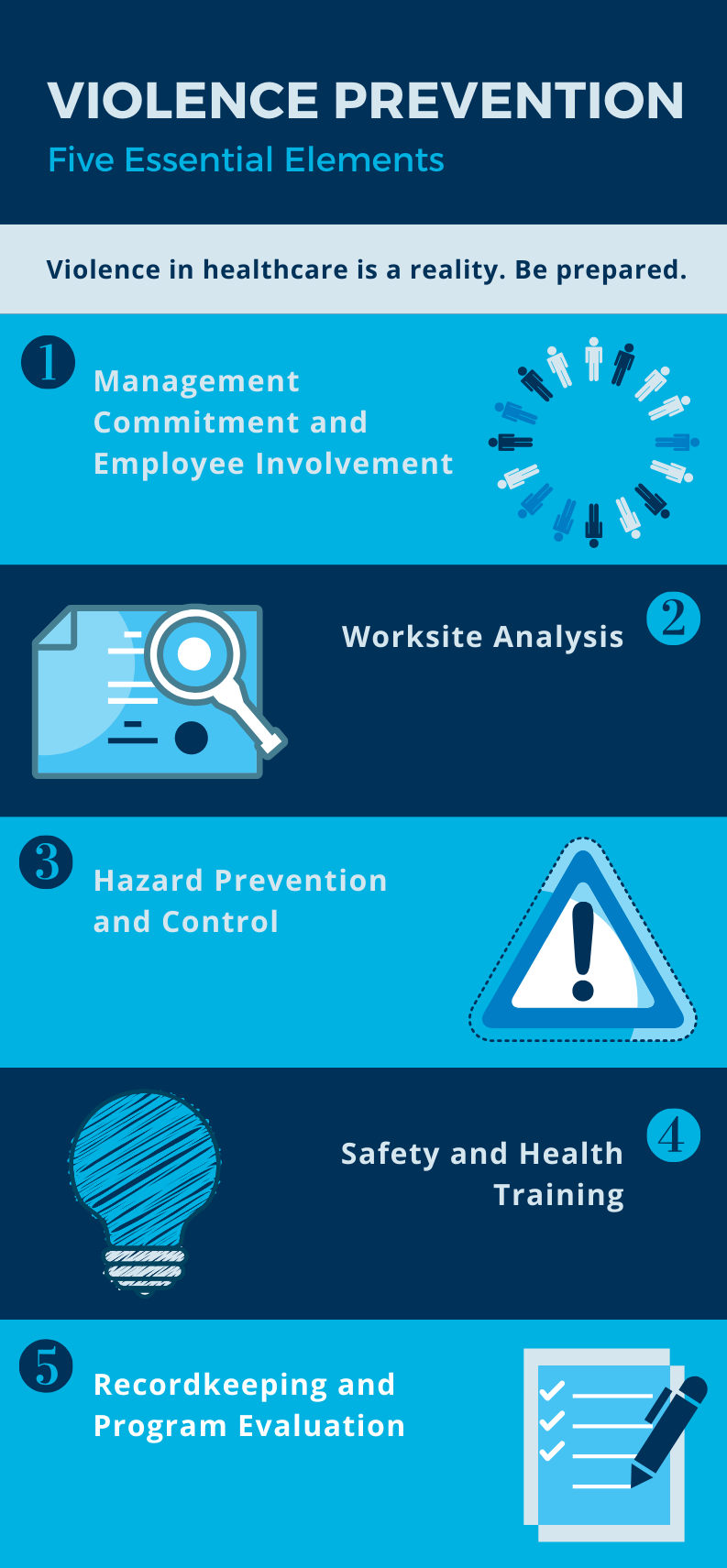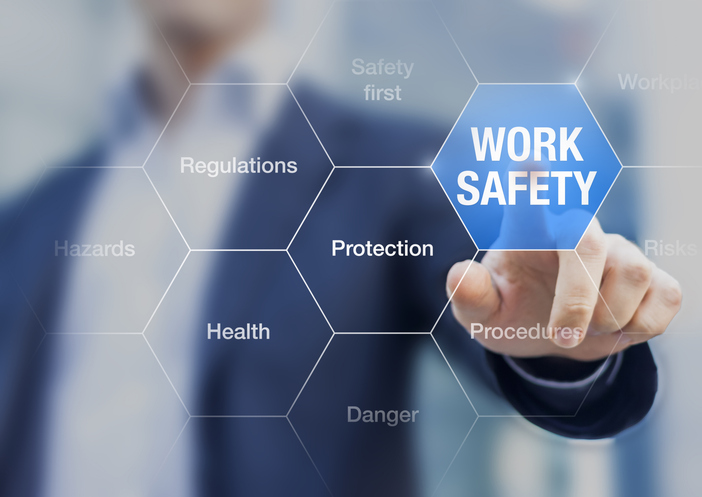How to Review the Efficiency of Your California Workplace Violence Prevention Initiatives
How to Review the Efficiency of Your California Workplace Violence Prevention Initiatives
Blog Article
The Role of Staff Member Training and Awareness in Enhancing Workplace Violence Avoidance Initiatives Throughout Different Industries
The integration of worker training and understanding into office violence avoidance efforts is increasingly identified as a fundamental facet of business safety across varied sectors. Comprehending these subtleties may expose methods that can considerably improve safety protocols and worker confidence in high-risk settings.
Significance of Educating Programs
In today's dynamic workplace, the relevance of training programs can not be overstated, particularly in the context of office violence prevention. These programs offer as a fundamental aspect in cultivating a safe and risk-free workplace culture. By gearing up staff members with the knowledge and abilities necessary to recognize, reduce, and react to potential threats, companies can cultivate an environment that focuses on security and wellness.
Efficient training programs do greater than merely instruct; they empower staff members to acknowledge indication of physical violence, recognize the protocols for reporting cases, and establish methods to de-escalate prospective disputes. They impart a feeling of collective duty amongst staff, motivating proactive engagement in keeping a risk-free office.
Financial investment in training not only boosts worker recognition yet likewise shows a company's dedication to guarding its labor force. This positive strategy can lead to minimized occurrences of office physical violence, lower absence, and boosted worker morale. Inevitably, detailed training programs are indispensable to developing a resilient organizational society that values safety and advertises a healthy workplace, consequently reducing the danger of violence and its linked consequences.
Secret Elements of Effective Recognition
A comprehensive understanding program incorporates a number of essential components that are necessary for effectively protecting against workplace violence. Clear communication of treatments and plans associated to work environment violence is essential. Workers have to be educated about the company's position on physical violence and the specific protocols in place for reporting events.
Second, training sessions ought to incorporate practical circumstances that workers may experience. This sensible technique helps employees identify advising indicators of possible physical violence and equips them with the required abilities to de-escalate tense scenarios. Third, fostering a supportive work environment society is essential; workers ought to feel empowered to speak up without worry of revenge.
Incorporating feedback systems permits staff members to share their experiences and insights, which can lead to continuous enhancement of awareness initiatives. By integrating these parts, companies can produce a robust framework for avoiding work environment violence, ultimately contributing to a more secure and more efficient setting for all staff members (california workplace violence prevention).
Industry-Specific Training Strategies
Reliable office physical violence prevention training have to be tailored to the distinct difficulties and dangers dealt with by particular sectors. Medical care atmospheres call for training that resolves the high likelihood of experiences with aggressive patients or visitors. Programs must concentrate on de-escalation strategies, identifying indication of possible physical violence, and guaranteeing personnel understand the importance of reporting events.
In comparison, retail setups may deal with various hazards, such as robbery or client disagreements. Training in these atmospheres ought to emphasize situational understanding, reaction procedures throughout emergencies, and the importance of protecting money and prized possessions.
Production and building sectors present their very own risks, usually linked with interpersonal problems or risky working problems. Training in these industries must consist of methods for conflict resolution, advertising a society of safety and security, and motivating open interaction among employees.
In addition, corporate workplaces might call for training fixated preventing harassment and bullying, promoting a considerate workplace culture, and executing clear coverage systems. Each market has to not only acknowledge its specific susceptabilities but additionally adapt training products to resonate with the labor force successfully, making sure that workers feel equipped and empowered to manage prospective terrible situations.
Determining Training Effectiveness
Evaluating the influence of work environment physical violence prevention training is important for guaranteeing that staff members are adequately prepared to handle potential threats. Pre- and post-training surveys can assess modifications in worker knowledge, mindsets, and habits worrying office violence.
In addition, practical assessments, such as role-playing scenarios or simulations, can offer insights right into just how well staff members apply discovered skills in real-life scenarios. Checking occurrence records prior to and after training can check it out likewise serve as an indication of effectiveness, as a reduction in incidents may show enhanced employee preparedness.
Moreover, feedback from participants ought to be systematically accumulated to determine locations for improvement in training content and shipment. Carrying out follow-up examinations at normal periods aids endure understanding and enhances training concepts gradually - california workplace violence prevention. By employing an extensive approach to gauging training efficiency, organizations can make certain that their office physical violence prevention initiatives promote a much safer environment and boost general staff member wellness
Structure a Society of Safety And Security

Educating plays an essential function in this cultural shift. Routine, thorough training sessions educate workers concerning acknowledging indication of work environment physical violence and the proper reactions. Moreover, urging reference open communication enables employees to voice issues without concern of revenge, promoting collective obligation for security.
In addition, integrating safety into daily operations ensures that it becomes a shared worth as opposed to a plain conformity concern. This includes normal safety drills, updates on plans, and comments systems that involve workers in safety discussions and renovations.
Eventually, a durable culture of security not just mitigates the risks of workplace physical violence but likewise improves employee spirits and performance. By cultivating an environment where security is an essential concern, organizations can produce resistant offices that sustain both individual well-being and collective success.
Conclusion
In verdict, worker training and recognition are crucial parts in the prevention of office physical violence throughout numerous industries. Reliable training programs, tailored to particular market requirements, enhance staff members' capacity to respond and recognize to prospective risks. By carrying out thorough awareness methods and cultivating a culture of security, organizations can considerably lower occurrences of workplace physical violence and improve overall worker spirits. Commitment to recurring training and assessment guarantees sustained effectiveness and adaptability in resolving emerging difficulties within the workplace environment.

Regular, extensive training sessions inform staff members concerning identifying caution indications of workplace physical More Info violence and the ideal feedbacks.In final thought, staff member training and awareness are important components in the avoidance of workplace violence across different industries.
Report this page